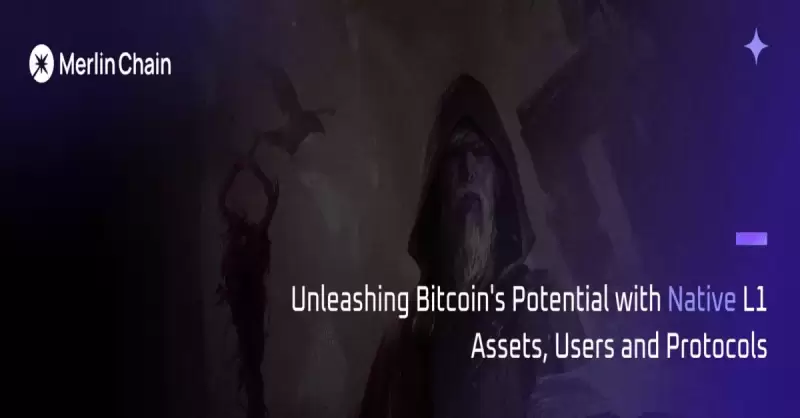 |
|
 |
|
 |
|
 |
|
 |
|
 |
|
 |
|
 |
|
 |
|
 |
|
 |
|
 |
|
 |
|
 |
|
 |
|
Cryptocurrency News Articles
76-year-old finds rare Roman coin after 6 years of searching the same farmer's field
Apr 11, 2025 at 10:07 pm
A gold Roman coin believed to be the first of its kind ever found in Britain fetched thousands at auction after being unearthed by a devoted metal detectorist.

A Breakthrough Prize-winning physicist says quantum physics is ‘nonsense’
From Scientific American: In the pantheon of modern physics, few figures can match the quiet authority of Gerard ’t Hooft. The Dutch theoretical physicist, now a professor emeritus at Utrecht University in the Netherlands, has spent much of the past half-century reshaping our understanding of the fundamental forces that knit together reality. But ’t Hooft’s unassuming, soft-spoken manner belies his towering scientific stature, which is better revealed by the prodigious numbers of prestigious prizes he has accrued, which include a Nobel Prize, a Wolf Prize, a Franklin Medal, and many more.
His latest accolade, announced on April 5, is the most lucrative in all of science: a Special Breakthrough Prize in Fundamental Physics, worth $3 million, in recognition of ’t Hooft’s myriad contributions to physics across his long career. In a conversation with Scientific American, ’t Hooft spoke about his Breakthrough Prize, his optimism for the future of particle physics and his dissatisfaction with quantum mechanics.
76-year-old finds rare Roman coin after 6 years of searching in farmer’s field
From Good News Network: A gold Roman coin believed to be the first of its kind ever found in Britain has fetched thousands at auction after being unearthed by a devoted metal detectorist.
Ron Walters finally struck gold after six years of searching the same farmer’s field in spring and autumn when the crops weren’t sown. The retired welder said he stumbled across the rare coin, which dates back to 69AD, on a day when he was planning to stay home.
“I was going to go one Thursday and decided against it. It was my wife who basically told me to ‘bugger off and get out of the house for a bit'.”
It is believed to be the first gold aureus of emperor Aulus Vitellius to ever be recorded as a find in the British Isles. The 1,955-year-old coin was auctioned this week by Fieldings Auctioneers and fetched $6,000, which the Kingswinford man will split with the field’s landowner.
This tropical tree thrives after being struck by lightning
From Science.org: Growing up to 55 meters tall in the tropical forests of Panama, the almendro tree is a natural lightning rod.
And that appears to be a good thing: The millions of volts that course through this species during a strike electrocute parasitic vines and leap from branches, killing nearby trees that might compete for the almendro’s sunlight, researchers report today in New Phytologist.
Lightning works in mysterious ways in tropical forests. Unlike in cooler climes, trees don’t scorch, ignite, or explode when struck.
Since 2014, scientists have installed several monitoring systems in a patch of forest on Panama’s Barro Colorado Island. The systems can pinpoint the location of a lightning bolt to within fewer than 30 meters.
Almendro trees (Dipteryx oleifera) seemed particularly resilient to lightning strikes. All nine that had been struck were practically unscathed, losing only small patches of leaves. In comparison, similarly tall trees of other species took nearly six times as much damage.
These 2,000-year-old mystery mounds in Ohio were built by an ancient civilization
From the BBC: We stopped when we reached the opening of a turf-topped circle, which was formed by another wall of mounded earth. We were at The Octagon, part of the Hopewell Ceremonial Earthworks, a large network of hand-constructed hills spread throughout central and southern Ohio that were built as many as 2,000 years ago. Indigenous people would come to The Octagon from hundreds of miles away, gathering regularly for shared rituals and worship.
All these prehistoric ceremonial earthworks in Ohio were created by what is now called the Hopewell Culture, a network of Native American societies that gathered from as far away as Montana and the Gulf of Mexico between roughly 100 BCE and 500 CE. Their earthworks in Ohio consist of shapes - like circles, squares and octagons - that were often connected to each other. Archaeologists are only now beginning to understand the sophistication of these engineering marvels.
Disclaimer:info@kdj.com
The information provided is not trading advice. kdj.com does not assume any responsibility for any investments made based on the information provided in this article. Cryptocurrencies are highly volatile and it is highly recommended that you invest with caution after thorough research!
If you believe that the content used on this website infringes your copyright, please contact us immediately (info@kdj.com) and we will delete it promptly.
-

-

-

-

- Donald Trump to Host a Private Gala for 220 Crypto Traders Who Have the Largest Official TRUMP Holdings
- Apr 26, 2025 at 12:30 am
- An address associated with a trader dubbed boop on the Official Trump (TRUMP) leaderboard swapped 298,017 Fartcoins (FARTCOIN) worth over $300,000 at the time of the transaction for 26,178 TRUMP, according to data retrieved by Finbold from Solscan.
-

-

-

-

- As US President Donald Trump Announces a 90-day Tariff Delay, Cryptocurrencies Bitcoin (BTC), XRP, and Dogecoin (DOGE) Are Showing Signs of a Potential Breakout.
- Apr 26, 2025 at 12:20 am
- In addition to Trump's hint at pausing the 50% tariff on China, all eyes are on its potential impact on the broader crypto market.
-

- Top Business Tycoons Including Elon Musk Will Reportedly Attend the May 22 Dinner with President Donald Trump
- Apr 26, 2025 at 12:15 am
- Top business tycoons such as Elon Musk are reportedly going to attend the May 22 dinner in Washington, D.C. to meet President Donald Trump. Crypto industrialist Justin Sun is also a part of the VIP dinner list. By .



























































